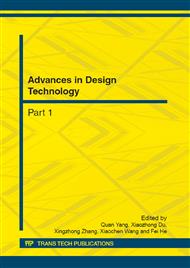p.174
p.178
p.182
p.187
p.193
p.197
p.202
p.207
p.212
Design Parameters Optimization of Cutting Head of Cantilever Roadheader Based on Genetic Algorithm
Abstract:
For hard rocks whose protodyakonov scale of hardness f are greater than 8, research on the optimization design of cutting head of cantilever roadheader. Optimization model of the cutting head was established, in this model, the objective function was established based on dust mount, energy consumption and production efficiency. The design variables contain cutting head structural and kinetic parameters, the constraints are determined in accordance with working condition and practical experience. Cutting head parameters are optimized with parameters change related to rock strength, using genetic algorithm in Matlab7.0. A variety of cutting parameters optimization results related to rock strength are of great significance for the structural design of the cutting head and selection of kinetic parameters.
Info:
Periodical:
Pages:
193-196
Citation:
Online since:
November 2012
Authors:
Price:
Сopyright:
© 2012 Trans Tech Publications Ltd. All Rights Reserved
Share:
Citation:


